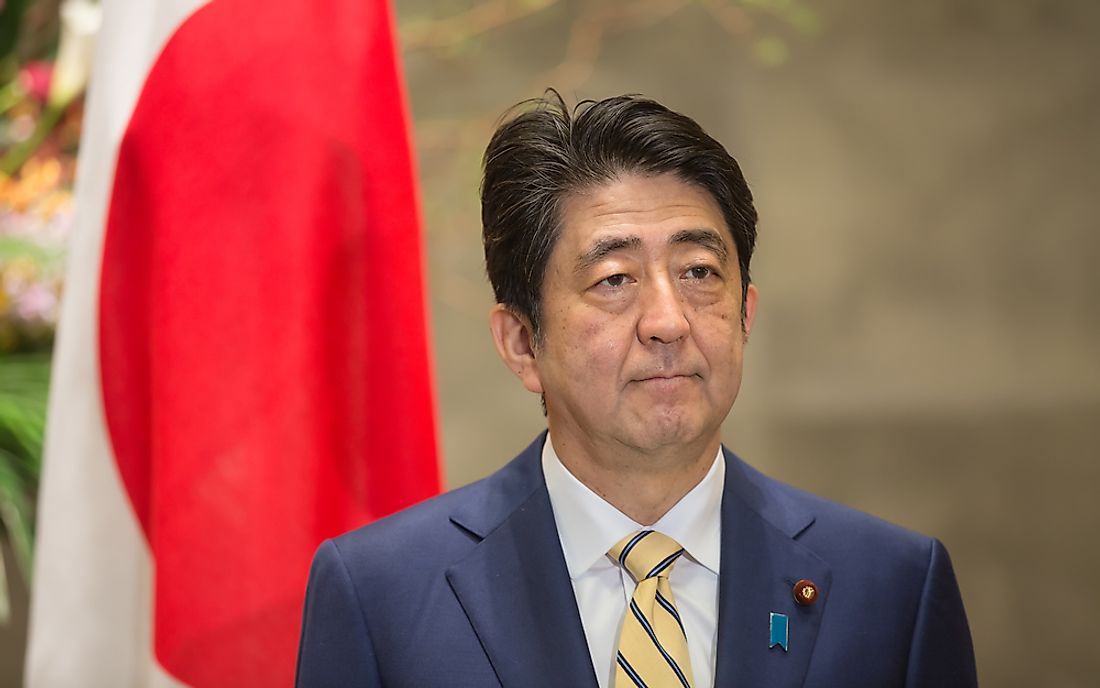List of Japanese Prime Ministers

The government of Japan is a constitutional monarchy, with three branches of the executive, the legislature, and the judiciary. A new constitution, the Constitution of Japan, was implemented in 1947 to promote democracy, and the parliamentary system remained.
Prime Minister of Japan
Under the parliamentary system, the emperor appoints a prime minister who is the head of government in Japan. This position has the power to appoint ministers of other administrative bodies. The prime minister must have the support of the House of Representatives in order to maintain his/her appointment. Since 1885, the country has had 64 prime ministers, some of whom have served several terms. This article takes a look at the most notable among them.
Notable Prime Ministers of Japan
The first prime minister of Japan was Ito Hirobumi, who served in the role over the course of four separate terms. These terms were from 1885 to 1888, from 1892 to 1896, in 1898, and from 1900 to 1901. He was influential during the Meiji Restoration and helped to draft the first constitution. Between his first and second terms, he remained involved in the government in an advisory committee to the emperor. He helped lead the country into the First Sino-Japanese War with China to gain control of Korea during his second term as prime minister. In 1898, he only served for 6 months because of his forced resignation. Opposing political parties did not agree with his plan for land taxes. He again became prime minister in 1900 and again was faced with political opposition. He resigned in 1901.
The longest-serving prime minister of the Taisho Emperor was Hara Takashi. Prime minister Takashi filled the role from September 29, 1918 to November 4, 1921 after his predecessor was removed from office due to increasing rice prices and economic hardship throughout the country. Takashi was the first civilian prime minister having neither military nor bureaucratic experience. He lost popular support when he refused to push a law granting universal suffrage. Under Takashi, Korea gained limited self-ruling power and its military-controlled colonial administration was replaced by civilians. In 1921, a railroad switch-man stabbed him to death.
During the reign of the Showa Emperor, Hideki Tojo was the longest-serving prime minister. His term lasted from October 18, 1941 to July 22, 1944. He rose to power by beginning his political career as Army Minister, a position he continued to hold while prime minister. During his term, he was also Home Minister, Foreign Minister, Education Minister, and Minister of Commerce and Industry. He governed under a totalitarian ideology which he promoted in the public education system. Throughout World War II, he held popular support until Japan began to lose the war. It was Tojo who called for the attack on Pearl Harbor, turning the United States against Japan. When the war ended, the International Military Tribunal for the Far East arrested, tried, and sentenced Tojo to death. He was hanged on December 23, 1948.
Emperor Showa maintained control until the year 1989. Since 1989, Japan has been in the Heisei Period under Emperor Akihito. A complete list of the former prime ministers of Japan can be found below.
Prime Ministers Of Japan Through History
| Prime Ministers of Japan | Term(s) in Office |
| Itō Hirobumi | 1885-1888; 1892-1896; 1898; 1900-1901 |
| Kuroda Kiyotaka | 1888-1889 |
| Sanjō Sanetomi | 1889 |
| Yamagata Aritomo | 1889-1891; 1898-1900 |
| Matsukata Masayoshi | 1891-1892; 1896-1898 |
| Ōkuma Shigenobu | 1898; 1914-1916 |
| Katsura Tarō | 1901-1906; 1908-1911; 1912-1913 |
| Saionji Kinmochi | 1906-1908; 1911-1912 |
| Yamamoto Gonnohyōe | 1913-1914; 1923-1924 |
| Terauchi Masatake | 1916-1918 |
| Hara Takashi | 1918-1921 |
| Takahashi Korekiyo | 1921-1922 |
| Katō Tomosaburō | 1922-1923 |
| Kiyoura Keigo | 1924 |
| Katō Takaaki | 1924-1926 |
| Wakatsuki Reijirō | 1926-1927; 1931 |
| Tanaka Giichi | 1927-1929 |
| Hamaguchi Osachi | 1929-1931 |
| Inukai Tsuyoshi | 1931-1932 |
| Saitō Makoto | 1932-1934 |
| Okada Keisuke | 1934-1936 |
| Hirota Kōki | 1936-1937 |
| Hayashi Senjūrō | 1937 |
| Konoe Fumimaro | 1937-1939; 1940-1941 |
| Hiranuma Kiichirō | 1939 |
| Abe Nobuyuki | 1939-1940 |
| Yonai Mitsumasa | 1940 |
| Tōjō Hideki | 1941-1944 |
| Koiso Kuniaki | 1944-1945 |
| Suzuki Kantarō | 1945 |
| Prince Higashikuni no miya Naruhiko ō | 1945 |
| Shidehara Kijūrō | 1945-1946 |
| Yoshida Shigeru | 1946-1947; 1948-1954 |
| Katayama Tetsu | 1947-1948 |
| Ashida Hitoshi | 1948 |
| Hatoyama Ichirō | 1954-1956 |
| Ishibashi Tanzan | 1956-1957 |
| Kishi Nobusuke | 1957-1960 |
| Ikeda Hayato | 1960-1964 |
| Satō Eisaku | 1964-1972 |
| Tanaka Kakuei | 1972-1974 |
| Miki Takeo | 1974-1976 |
| Fukuda Takeo | 1976-1978 |
| Ōhira Masayoshi | 1978-1980 |
| Itō Masayoshi | 1980 |
| Suzuki Zenkō | 1980-1982 |
| Nakasone Yasuhiro | 1982-1987 |
| Takeshita Noboru | 1987-1989 |
| Uno Sōsuke | 1989 |
| Kaifu Toshiki | 1989-1991 |
| Miyazawa Kiichi | 1991-1993 |
| Hosokawa Morihiro | 1993-1994 |
| Hata Tsutomu | 1994 |
| Murayama Tomiichi | 1994-1996 |
| Hashimoto Ryūtarō | 1996-1998 |
| Obuchi Keizō | 1998-2000 |
| Mori Yoshirō | 2000-2001 |
| Koizumi Jun'ichirō | 2001-2006 |
| (Incumbent) Abe Shinzō | 2006-2007; 2012-Present |
| Fukuda Yasuo | 2007-2008 |
| Asō Tarō | 2008-2009 |
| Hatoyama Yukio | 2009-2010 |
| Kan Naoto | 2010-2011 |
| Noda Yoshihiko | 2011-2012 |











